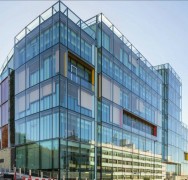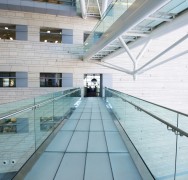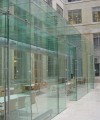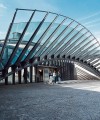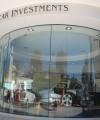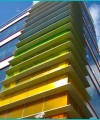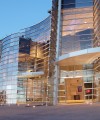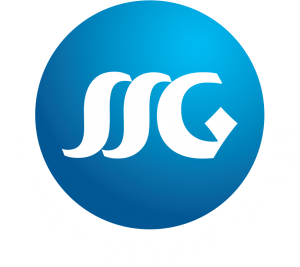General Standard Laminated Glass
Laminated glass is a kind of safety glass and is hard to break. The glass may be retained in its frame even if being broken.Laminated glass is made of two or more layers of glass with one or more “interlayers” of polymeric material bonded between the glass layers.
Laminated glass is produced using one of two methods:
- Poly Vinyl Butyral (PVB) laminated glass is produced using heat and pressure to sandwich a thin layer of PVB between layers of glass. On occasion, other polymers such as Ethyl Vinyl Acetate (EVA) or Polyurethane (PU) are used. This is the most common method.
- For special applications, Cast in Place (CIP) laminated glass is made by pouring a resin into the space between two sheets of glass that are held parallel and very close to each other.
Laminated glass offers many advantages. Safety and security are the best-known of these — rather than shattering on impact, laminated glass is held together by the interlayer, reducing the safety hazard associated with shattered glass fragments, as well as, to some degree, the security risks associated with easy penetration. But the interlayer also provides a way to apply several other technologies and benefits, such as colouring, sound dampening, resistance to fire, ultraviolet filtering, and other technologies that can be embedded in or with the interlayer.
Laminated glass is used extensively in building and housing products and in the automotive and transport industries. Most building façades and most car windscreens, for example, are made with laminated glass, usually with other technologies also incorporated.
Advantages
- Security : installed laminated glass may not be easily broken. Therefore, laminated glass provides effective defense against malicious destroy, pilferage and violent invasion.
- Prevention against hurricane and earthquake: for the reason that fragments of broken glass still retain in its original position, laminated glass is suitable for regions subject to hurricane and earthquake.
- Noise reduction performance: PVB membrane has good sound wave hindering property and thus, laminated glass may effectively reduce transmission of noise.
- UV shielding performance: laminated glass can substantially ward off ultraviolet (as much as over 99%), thus it helps to reduce the affect of ultraviolet on costly furniture, curtains, exhibits and other articles.
Application
- Building Windows
- car windscreens
- House Windows
- Transport Industries
Production Range
- Maximum dimension (mm): 2500 x 7800
- Color of PVB membrane: clear, milky white, gray, blue, green and pink etc
- Thickness of PVB membrane (mm): 0.38 – 3.04

